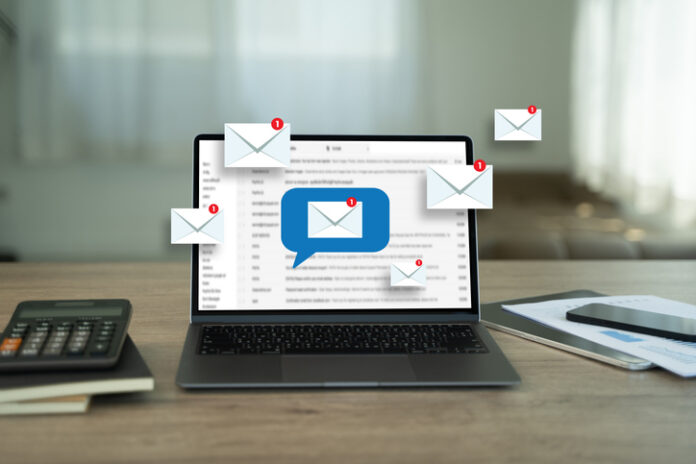Digital marketing has seen astronomical advances that changed how businesses advertise to consumers. Amidst the growth in the industry, one channel has remained paramount to marketers — email. Any marketing expert understands that email is an effective way to communicate with audiences. It’s an affordable method of engaging with customers. A small investment could help your campaign reach thousands. Emails also let you contact the audience consistently. You can achieve various goals with email marketing, but only when done right. An email marketing campaign involves emailing existing and prospective customers en masse to achieve a particular objective. Developing an actionable plan is not easy, even for a professional with experience. What helps is to know the critical aspects of an email marketing campaign. This article takes you through the fundamentals of a good marketing strategy.
Types of Email Campaigns
Before learning about what to focus on, you should know that email marketing strategies take different forms. Distinguishing between common campaign types will make it easier to pick the most suitable for your business. You can also find an email marketing platform with the best outcomes for your preferred campaign. Newsletters are popular ways to market. They provide recipients with updates, news and industry trends. The chief objective is to inform the audience of current happenings. Newsletters can contain images, blog posts or videos.
Onboarding and welcome emails introduce new customers to a brand. This kind of campaign sets the tone for your communication with the audience. Therefore, it has to make a lasting first impression. Since you want to convince prospective customers, a welcome email can include discounts, sale offers and other freebies. If you have a fresh offering that you want customers to learn about, then you need promotional emails. These campaigns are all about generating revenue and inspiring brand loyalty. They can be personalised or not. Over time, subscribers can go inactive, requiring you to re-engage them. Re-engagement emails often include incentives to encourage readers to interact with the business. Now that you are familiar with the different strategies you can take in email marketing, find out what makes an effective campaign.
Define Campaign Goals
Businesses accomplish a lot through email marketing. They increase sales, build brand awareness, educate, entertain and promote new products, to mention a few. You can’t develop a marketing plan without knowing the end game. Your objectives show you the way. They tell you how to structure the content and design the email. Goals also help you gauge a campaign’s effectiveness. The right strategy can help you fulfil multiple objectives.
Research the Audience
It’s impossible to develop an email marketing plan that resonates with the audience when you don’t know what the recipients want. Understanding the people you intend to communicate with is crucial if you are to offer them value. Audience research is necessary if you are new to email marketing. Invest resources in learning about your current and potential customers. Find out their location, interests, buying habits and age. Examine audience engagement history if it’s available. Knowing the people you are targeting enables you to develop relevant strategies. Additionally, customisation is less complicated when you know your audience’s preferences.
Create Compelling Content
Everything you do during your campaign comes down to the material you put out. The content you distribute must be engaging. It needs to elicit the feelings you want in the audience. Start with an attention-grabbing subject line. The minute your email pops up in the recipient’s inbox, it should inspire positive action. Encourage readers to open emails with a subject that’s clear and short. You can also increase the open rate through personalisation. Begin your email with the recipient’s name. Refer to past engagements to find preferences you can leverage to appeal to the reader. The copy you present to a customer or prospective should be valuable. Give the audience a reason to keep reading. You can engage a reader with incentives such as discounts. As you finish up, add a call to action. Emails are only effective if they drive recipients to act. You could ask the audience to buy a product, visit a website or sign up to a service.
Prioritise Email Design
How you lay out your email impacts its usefulness. Emails should be visually appealing. Glancing at the email should encourage the audience to continue reading. So, prioritise readability. Use legible font and space the copy properly. The content should flow smoothly, allowing the reader to get the gist from a quick scan. If the copy contains images, they must be of high quality. Don’t use too many images that distract the reader or slow down loading. Good email design should also be responsive. Audiences who use mobile devices shouldn’t struggle to read your content.
Successful email marketing plans are multi-faceted, and understanding the different aspects involved is critical. After implementing your campaign, monitoring the results tells you if it attained the objectives set.


























![“Does Everyone Hear Me OK?”: How to Lead Virtual Teams Effectively iStock-1438575049 (1) [Converted]](https://www.europeanbusinessreview.com/wp-content/uploads/2024/11/iStock-1438575049-1-Converted-100x70.jpg)




